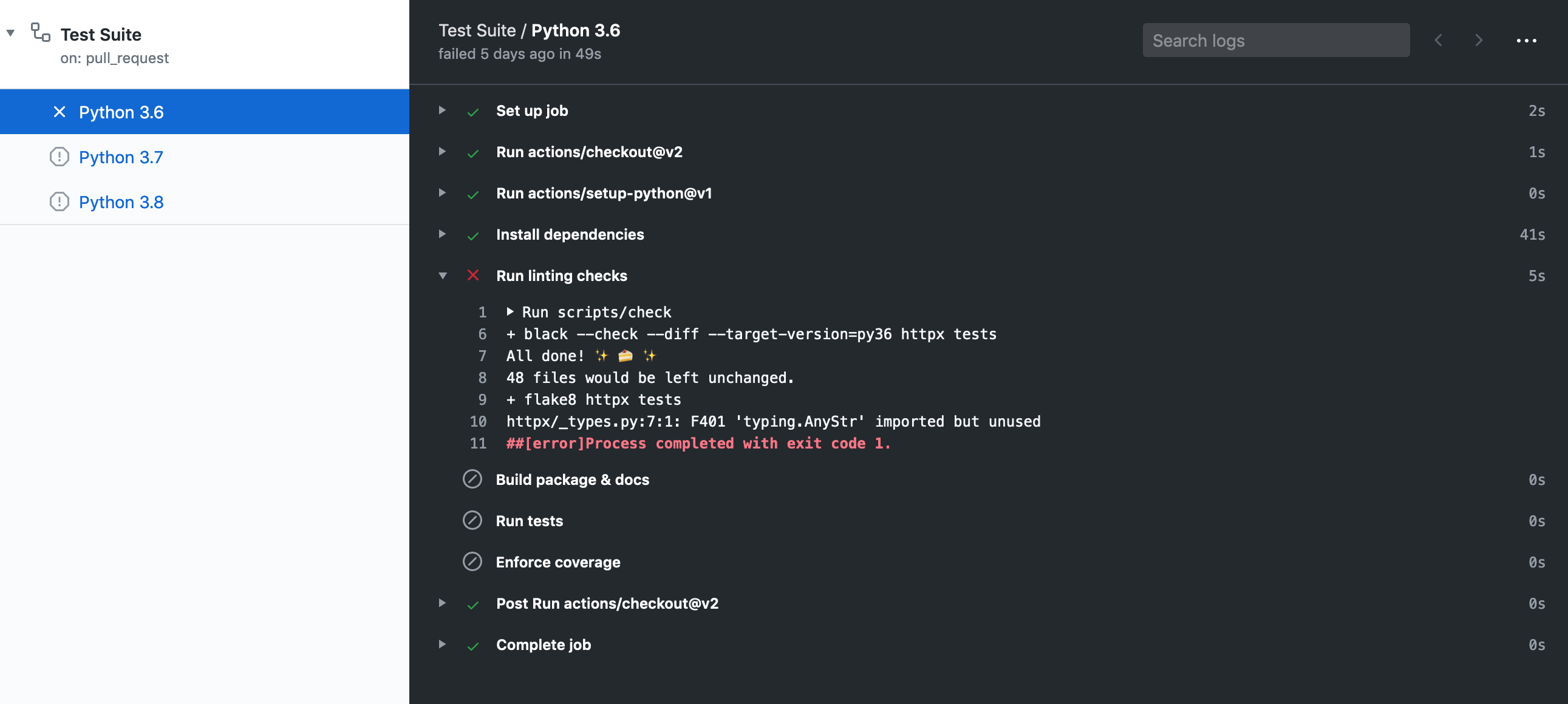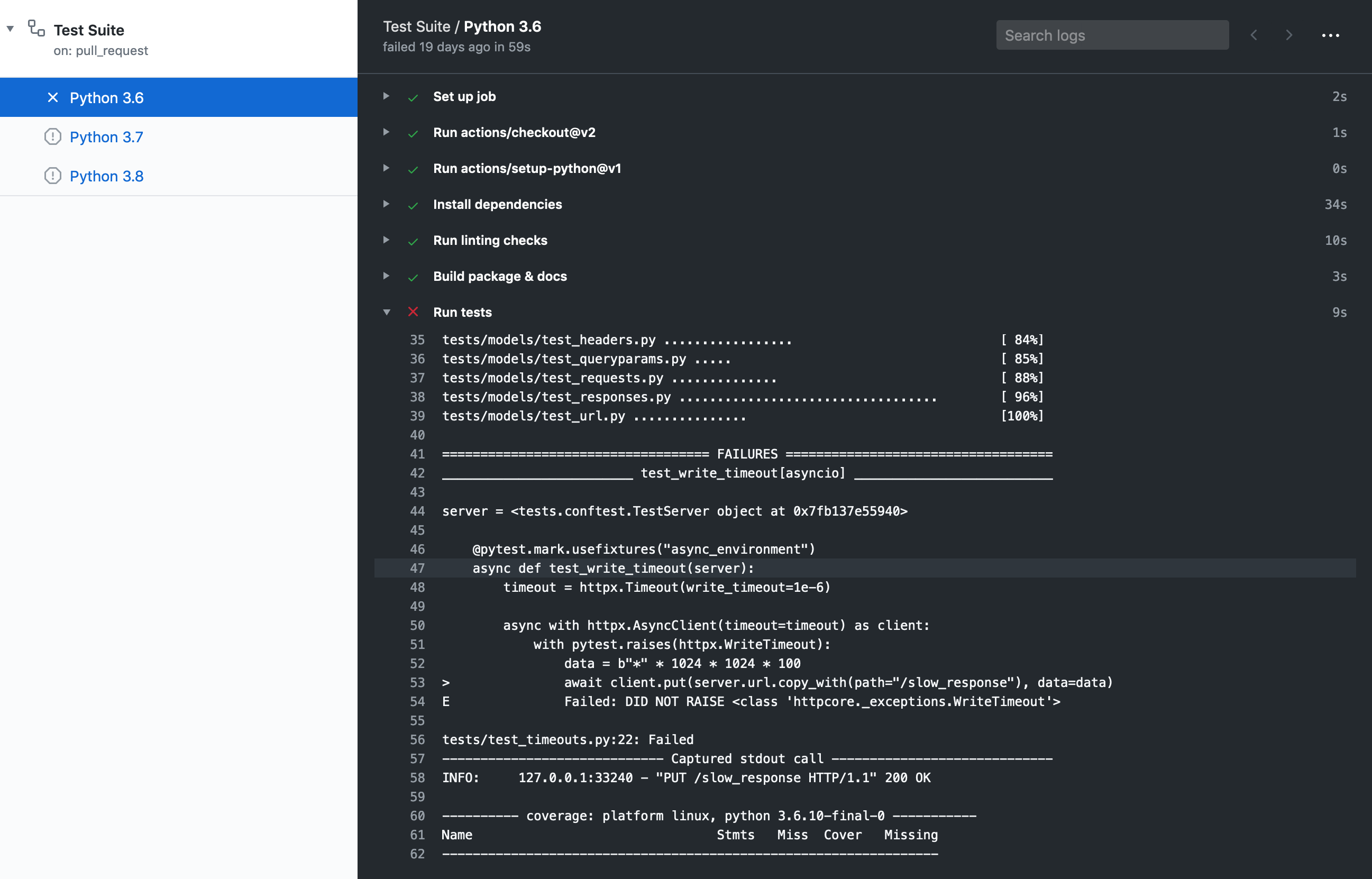Contributing¶
Thanks for considering contributing to HTTP Core!
We welcome contributors to:
Try HTTPX, as it is HTTP Core’s main entry point, and report bugs/issues you find
Help triage issues and investigate root causes of bugs
Review, clarify and write documentation
Participate in discussions
Reporting Bugs or Other Issues¶
HTTP Core is a fairly specialized library and its main purpose is to provide a solid base for HTTPX. HTTPX should be considered the main entry point to HTTP Core and as such we encourage users to test and raise issues in HTTPX’s issue tracker where maintainers and contributors can triage and move to HTTP Core if appropriate.
If you are convinced that the cause of the issue is on HTTP Core you’re more than welcome to open an issue.
Please attach as much detail as possible and, in case of a bug report, provide information like:
OS platform or Docker image
Python version
Installed dependencies and versions (
python -m pip freeze)Code snippet to reproduce the issue
Error traceback and output
It is quite helpful to increase the logging level of HTTP Core and include the
output of your program. To do so set the HTTPCORE_LOG_LEVEL or HTTPX_LOG_LEVEL
environment variables to TRACE, for example:
$ HTTPCORE_LOG_LEVEL=TRACE python test_script.py
TRACE [2020-06-06 09:55:10] httpcore._async.connection_pool - get_connection_from_pool=(b'https', b'localhost', 5000)
TRACE [2020-06-06 09:55:10] httpcore._async.connection_pool - created connection=<httpcore._async.connection.AsyncHTTPConnection object at 0x1110fe9d0>
...
The output will be quite long but it will help dramatically in diagnosing the problem.
For more examples please refer to the environment variables documentation in HTTPX.
Development¶
To start developing HTTP Core create a fork of the repository on GitHub.
Then clone your fork with the following command replacing YOUR-USERNAME with
your GitHub username:
$ git clone https://github.com/YOUR-USERNAME/httpcore
You can now install the project and its dependencies using:
$ cd httpcore
$ scripts/install
Unasync¶
HTTP Core provides synchronous and asynchronous interfaces. As you can imagine, keeping two almost identical versions of code in sync can be quite time consuming. To work around this problem HTTP Core uses a technique called unasync, where the development is focused on the asynchronous version of the code and a script generates the synchronous version from it.
As such developers should:
Only make modifications in the asynchronous and shared portions of the code. In practice this roughly means avoiding the
httpcore/_syncdirectory.Write tests only under
async_tests, synchronous tests are also generated as part of the unasync process.Run
scripts/unasyncto generate the synchronous versions. Note the script is ran as part of other scripts as well, so you don’t usually need to run this yourself.Run the entire test suite as decribed below.
Testing and Linting¶
We use custom shell scripts to automate testing, linting, and documentation building workflow.
To run the tests, use:
$ scripts/test
Warning
The test suite spawns testing servers on ports 8000 and 8001. Make sure these are not in use, so the tests can run properly.
You can run a single test script like this:
$ scripts/test -- tests/async_tests/test_interfaces.py
To run the code auto-formatting:
$ scripts/lint
Lastly, to run code checks separately (they are also run as part of scripts/test), run:
$ scripts/check
Documenting¶
Documentation pages are located under the docs/ folder.
To run the documentation site locally (useful for previewing changes), use:
$ scripts/docs
Resolving Build / CI Failures¶
Once you’ve submitted your pull request, the test suite will automatically run, and the results will show up in GitHub. If the test suite fails, you’ll want to click through to the “Details” link, and try to identify why the test suite failed.

Here are some common ways the test suite can fail:
Check Job Failed¶

This job failing means there is either a code formatting issue or type-annotation issue. You can look at the job output to figure out why it’s failed or within a shell run:
$ scripts/check
It may be worth it to run $ scripts/lint to attempt auto-formatting the code
and if that job succeeds commit the changes.
Docs Job Failed¶
This job failing means the documentation failed to build. This can happen for
a variety of reasons like invalid markdown or missing configuration within mkdocs.yml.
Python 3.X Job Failed¶

This job failing means the unit tests failed or not all code paths are covered by unit tests.
If tests are failing you will see this message under the coverage report:
=== 1 failed, 435 passed, 1 skipped, 1 xfailed in 11.09s ===
If tests succeed but coverage is lower than our current threshold, you will see this message under the coverage report:
FAIL Required test coverage of 100% not reached. Total coverage: 99.00%
Releasing¶
This section is targeted at HTTPX maintainers.
Before releasing a new version, create a pull request that includes:
An update to the changelog:
We follow the format from keepachangelog.
Compare
masterwith the tag of the latest release, and list all entries that are of interest to our users:Things that must go in the changelog: added, changed, deprecated or removed features, and bug fixes.
Things that should not go in the changelog: changes to documentation, tests or tooling.
Try sorting entries in descending order of impact / importance.
Keep it concise and to-the-point. 🎯
A version bump: see
__version__.py.
For an example, see #99.
Once the release PR is merged, create a new release including:
Tag version like
0.9.3.Release title
Version 0.9.3Description copied from the changelog.
Once created this release will be automatically uploaded to PyPI.
If something goes wrong with the PyPI job the release can be published using the
scripts/publish script.